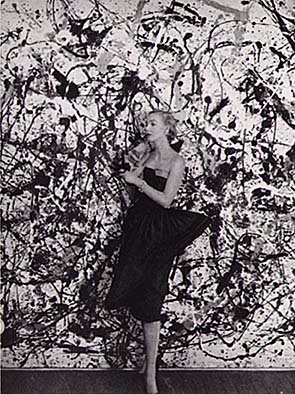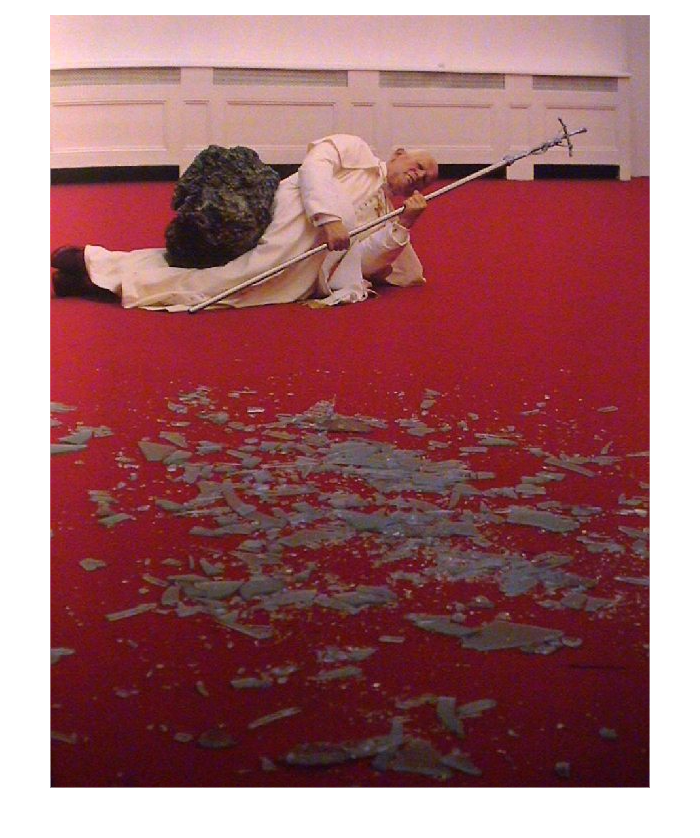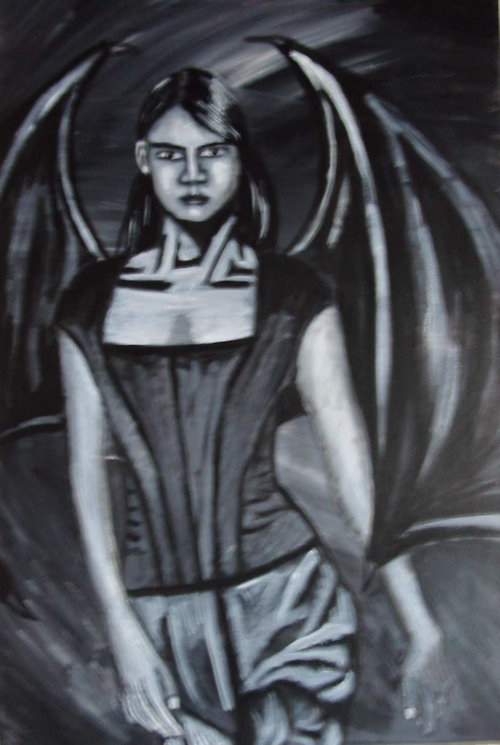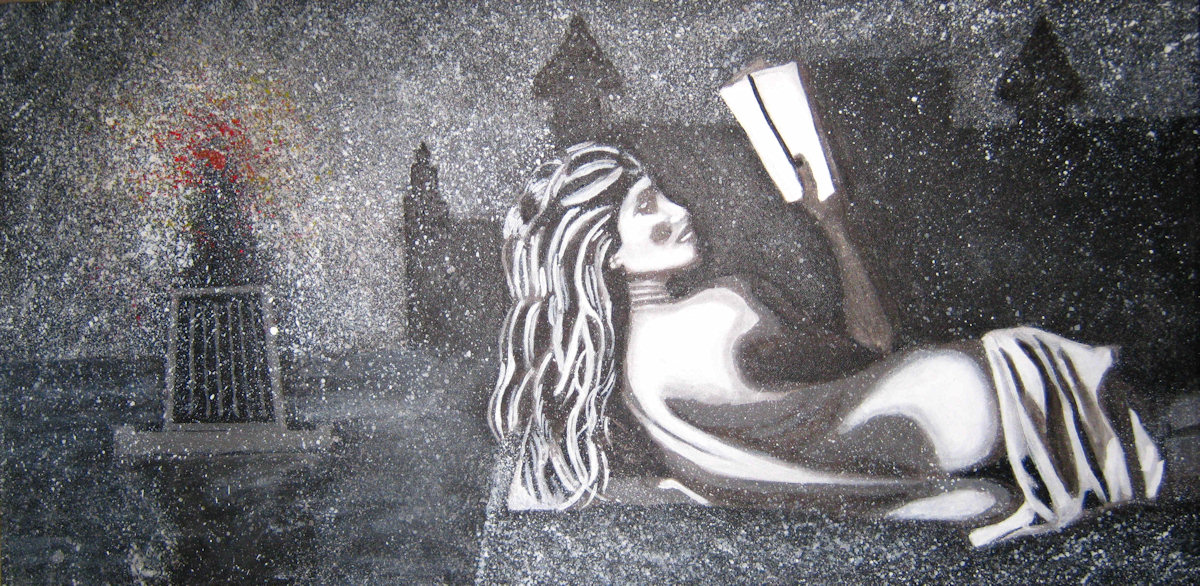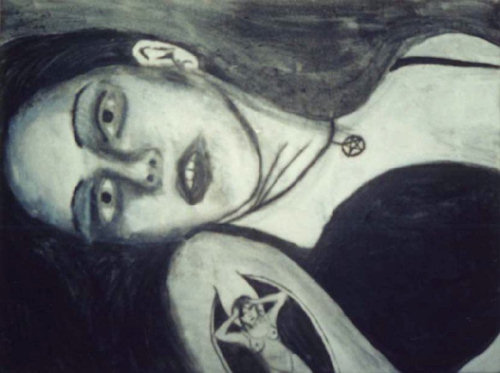|
|
|||||||||||||||||||||||||||||||
Art History, Artists and Anything Art!Hello and welcome to the Lilith Press Magazine's section for articles about Art History, Artists and Anything Art! Cuz making art is just that ridiculously awesome. Check out some of the art pieces we've posted up here. :) Some of the artists and art pieces we showcase here may be controversial or funny or both. Some of them may also be of a more serious nature. If you don't like them, that isn't our problem. Contact the artist if you don't like what they did. Don't send us hatemail if you don't like the art. We don't care if you don't like it. WE LIKE IT. So there. :p
Sincerely,
The Art History Archive
La Nona Ora / The Ninth HourThis sculpture was made in 2000 (and then photographed of course) by Maurizio Cattelan. It is, unabashedly, hilariously funny and poking fun at whether "God" really does control everything. Or whether stuff just happens. Or whether "God" doesn't really like the Pope. Any way you look at it, this is a sculpture that is both funny and makes you think. It is also a little bit of "science vs religion", wherein the meteor is a factual object that can be studied in person, and god is a somewhat fictional entity that has yet to be proven to exist. Facts Vs Faith, in other words. What I also find amusing is that the Pope just seems to be laying there. Not so much injured, just there. Maybe the artist didn't want it to be too gory. In light of the death of Pope John Paul II, and the more recent resignation of Pope Benedict following multiple sex scandals involving the Catholic Church and young boys, it is nice to see the Catholic Church has finally found a new Pope - Pope Francis from Argentina. In which case it is well past time that Pope be from a region where the Catholic religion has the most dominance (South America has more Catholics than any other part of the world). On an artistic level this sculpture is fantastic, utilizing multiple elements to create a realistic and recognizable image. Managing to convey multiple meanings at the same time (some of which are funny due to the irony). If you want to see more artwork like this I recommend Googling the name of the artist: Maurizio Cattelan.
The Paradox of Artistic Rebellion: Flourishing Amidst Autocracy in Putin's Russia
Or: The Bold Russian Artists Who Thrive in the Shadows, Balancing Creativity and DangerBy Chaz G. T. Patto - June 2023.
In a twist of irony, the autocratic rule of President Vladimir Putin has unwittingly become the backdrop for a flourishing artistic rebellion in Russia. As the Kremlin tightens its grip on power, a vibrant underground scene has emerged, with artists, musicians and filmmakers fearlessly challenging the status quo and pushing the boundaries of expression. However, amidst the captivating tales of artistic audacity, it is crucial to acknowledge the inherent dangers that these creative souls face in their pursuit of revolution and rebellion. The Resurgence of Russian Art Under Putin's rule, Russia has witnessed a resurgence of artistic expression. Driven by a desire to critique the political establishment and shed light on societal issues, artists have embraced their role as agents of change. From graffiti artists adorning city walls with subversive messages to filmmakers producing daring documentaries, the creative spirit of rebellion is alive and thriving. Satire and Subversion Artists in Putin's Russia have mastered the art of satire and subversion, using humor and irony to criticize the government and societal norms. Their works cleverly navigate the boundaries of acceptable expression, providing biting social commentary while eluding direct censorship. From political cartoons to irreverent performance art, their creative endeavors expose the contradictions and injustices of the regime. The Power of Symbolism Symbolism has become a potent weapon in the arsenal of rebellious Russian artists. Through evocative visuals and metaphors, they challenge prevailing narratives and convey powerful messages of dissent. Whether it be provocative installations in public spaces or thought-provoking street art, these artists employ symbolism to engage viewers, sparking conversations that question the very foundations of the regime. The Price of Dissent Despite the artistic renaissance, it is essential to recognize the inherent dangers faced by these creative voices. Putin's autocratic rule has stifled freedom of expression, leading to surveillance, harassment, and even imprisonment of dissenting artists. Many have faced censorship, legal battles, or had their works banned. The very act of rebellion comes with a price, as these artists navigate the thin line between creative liberation and the looming specter of repression. The Resilience of Russian Artists Despite the risks, Russian artists continue to push boundaries and persevere. Their unwavering determination to challenge authority demonstrates the indomitable human spirit and the power of art to ignite change. These fearless individuals refuse to be silenced, finding ingenious ways to circumvent restrictions and maintain their artistic integrity, often collaborating with like-minded individuals or utilizing digital platforms to amplify their voices. In the shadows of Putin's autocratic rule, a vibrant and audacious artistic rebellion thrives. Russian artists, driven by a passion for change, harness their creativity to challenge the status quo and expose societal injustices. They employ satire, symbolism, and the power of expression to galvanize conversations and provoke reflection. However, we must not overlook the inherent dangers they face—the constant threat of censorship, surveillance, and legal repercussions. Their resilience serves as a testament to the power of art, inspiring hope and reminding us that even in the darkest of times, creativity will persist, sparking a flame that can ignite revolutions. Here are some artists who have been known to voice opposition to Putin and his regime:
Is gothic art dead?
Ah, now that is complicated. Goth culture as a movement is comprised of fashion, music, art - and while it tends to be dark and moody, it is full of unique ways of expressing oneself. Let us take for example music. Some musicians, eg. Melodic Euphoria, are pretty new to the music scene and continue to make goth music in the tradition of Inkubus Sukkubus, Evanescence and other great goth bands... but still manage to come with a very unique musical style that is all their own. Same goes with gothic artists. Let us take for example Charles Moffat, who doesn't only make gothic art but also does political work and portraits too (and commissions for American / British TV shows). I have decided to showcase examples of his gothic paintings here. I picked Charles Moffat because as gothic artists go you really can't beat the guy who wrote the Neo-Gothic Art Manifesto. But here is the thing. Charles Moffat doesn't make gothic art any more. His more recent paintings have gone in a different direction (no, not landscapes, just a different direction that isn't gothic any more). And he isn't alone. What was once a very robust gothic subculture in the 1990s and 2000s has dwindled dramatically in the last number of years. As subcultures go heavy metal, emo and steampunk are now in vogue. Out of these three heavy metal is closest to goth, but steampunk is definitely the kewlest of the three. But maybe in another decade we shall see a rivival in gothic culture. Or maybe something new will come along. Very difficult to say and predict. It is true however that not all remnants of gothic culture are gone. Many of the shops are gone however. No longer will you find clothing stores dedicated solely to gothic fashion except in really big cities. Most of those stores disappeared before or during the Great Recession in 2007-2009. These days most gothic clothing stores operate online and are owned by people operating out of their apartment where they handmake corsets and other finery.
So perhaps we should say is that gothic art / culture is now "undead". Refuses to die completely. And it will return someday. Mwahahahaahaha! Now does that mean it will become known by a new name? Post-Gothic Art? Like Post-Impressionism? Maybe. We shall have to wait and see.
|
|
||||||||||||||||||||||||||||||
|
Website Design + SEO by designSEO.ca ~ Owned + Edited by Suzanne MacNevin | |||||||||||||||||||||||||||||||
